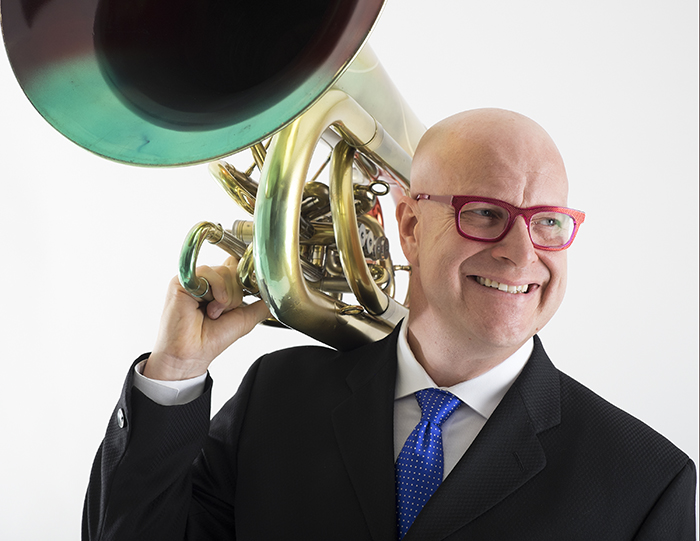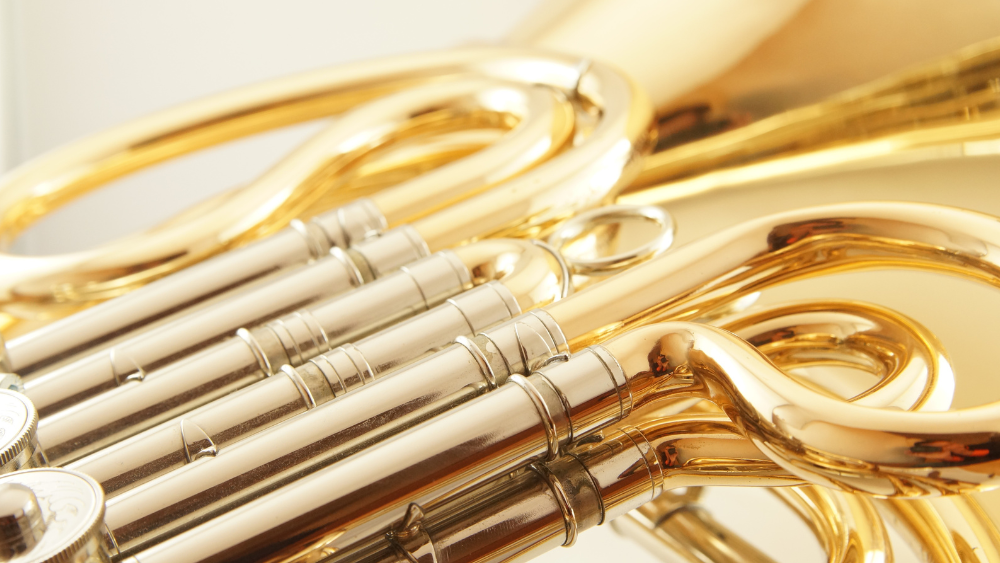The dilemma. In my nearly constant travel, I must meet at least 1,000 new music educators a year. There are many common questions about the nature and role of the beast that is a low clef dweller a.k.a the tuba player. I would like to address the most ubiquitous of them all: How do I engage and challenge my tuba players?
More often than not, most us feel a sense of elation just to have a tuba player in the band. If there is more than one in the band, then there is proof that “lighting a candle in church” really works. If faced with the challenge of recruiting a new player, the “sale” of taking up this largest, smelliest, whole note toting axe is probably better off left to the local snake oil salesman or requires a graduate course in negotiations from the Dale Carnegie Institute. Even more difficult, the “sale” of switching to this loathsome creature from the musical heights of the ledger domain that is the high brass and woodwinds looks to require the type of evangelical skills we see from the pulpit.
And then, once the sale is complete, it is common for us to be afraid to engage and challenge our tuba players for fear that the recruits, switchers and regulars will be out the back door of the band room to sign up for an AP course in Study Hall! I am amazed at what we will do for the best flute, clarinet and trumpet players in terms of creative involvement when the attention span of a young teenager wanes. I believe to better engage our low clef dwellers we need to be better educated as to the real role of the lowest voice of any ensemble. When explained to a student that the real responsibility of several aspects of the group’s success depends on the tuba players, legions of converted will be ready for the charge.
Children want to be given responsibility! There are three responsibilities (opportunities) that belong to the lowest voice of an ensemble. The laws of acoustics dictate this scientifically.
They include:
1. Sound foundation of an ensemble
2. Intonation
3. Time
Sound Foundation. How many times have you heard an ensemble with all-world caliber instrumentalists / singers in the treble clef and escaped inmates in the basement? Did the ensemble sound empty without the full spectrum of sound? Of course. Were the efforts of the all-stars weakened by the lack of tone production from the bottom? Of course. Would the all-star quarterback be an all-star if his linemen were built like Ally McBeal? NO! On the other hand, how many times have you heard a well balanced group pull off musical magic without superstars in the solo seats of the treble clef? Frequently.
We are all aware of the “pyramid of sound” ascribed to by Eugene Ormandy and others before and after him. Without a hefty, dark, broad, beautiful sound from our low clef dwellers, our ensembles will sound as though a caravan of semi-trucks delivering cattle to the slaughter has driven through it.
Children want responsibility.
Intonation. While it is very common to generate the starting reference pitch of an ensemble from an instrument that theoretically gives the most consistent result, the pitch of a group will gravitate towards the pitch center of the lowest voices. Why does the ear listen in that direction? The lower the frequency of sound generated, the less direction specific those sounds become. Tubas generate a sound that is omnidirectional. The scientific application of this is seen in speaker manufacture. Many companies produce sound systems that couple the high and mid-range speakers together across several boxes. (I.e. surround sound systems) and then put the job of tone generation of the lowest frequencies into one box we know as a species of naval canine, the subwoofer. The high and mid range speakers need to be placed in very specific locations to realistically reproduce the sound signal they are fed. The subwoofer (like any dog) can be put anywhere in the room and the sound still seems to emanate from the middle of the stereo or surround image produced by the highs and mids.
Think about your own ensembles – where does the pitch settle? Where the piccolo player is? No – where the tuba section is – every time. This should now indicate to you that it is critical that the best ears in the band belong to the tuba players.
If they are bored with whole notes, feed them with challenges of ear training. Teach them to sing and buzz all intervals up and down. Get them to transcribe their favorite melodies from their popular music. Have them play those transcriptions for the band. Have them learn Besame Mucho on the tuba (and be able to name all the intervals) and then tell them what the title means. (Kiss Me A Lot!) (Then have them make that offer (musically) to the cheerleading squad.)
If we make the role of the tuba player important, our students on this instrument will rise to the challenge AND those that don’t play it will understand that their seemingly all-important role in the ensemble is dependent in many respects.
Children want responsibility.
Time. Answer these two questions without smirking. If the tubas rush, does the band rush? If the tubas drag, does the band drag?
Get the point?
Tuba players in the best groups have metronomic like time. If yours do not, the curriculum for them needs to include a healthy does of time study. This is not complicated.
Buy them a $1.00 shaker egg. Have them take it home and listen to their favorite music and shake in time. (The physical ability to reproduce time or “groove” is an indication that the internal clock is functioning. This is also ear training!) Their technique with the egg is not important. Their groove is paramount, even if it is just a replication of the basic pulse.
Then when they feel comfortable with their groove have them start the groove to their chosen tune. Then while they continue to shake, hit the mute button on the stereo. (Or turn the volume down) As the groove settles, reintroduce the music. Make the object of the game to be able to match the groove as the music comes back in.
Further to this, draw their attention to highly rhythmic music in terms of their listening diet. Draw parallels from the music of James Brown, Bob Marley, George Clinton, Parliament, and Tower of Power (generate your own list) to your current marching or concert repertoire. The best classical music has a groove. If you don’t believe this, listen to Mozart recorded by George Szell and the Cleveland Orchestra. James Brown and members of Tower of Power acknowledge the swinging time of Maestro Szell.
Children want responsibility.
In conclusion. Most of us never think twice about upping the ante with our trumpet, flute and clarinet players when they moan of boredom. Since three critical components of the success of our bands lie with the tuba players, we need to create wonderful musicians from their ranks.
Children want responsibility.
Tuba fits the bill. But they need to know that and be encouraged to assume the helm for sound, pitch and time.
And when recruiting or switching, be careful whom you choose!
Vol 18, #4, p.11 (Mar-Apr 2003)






